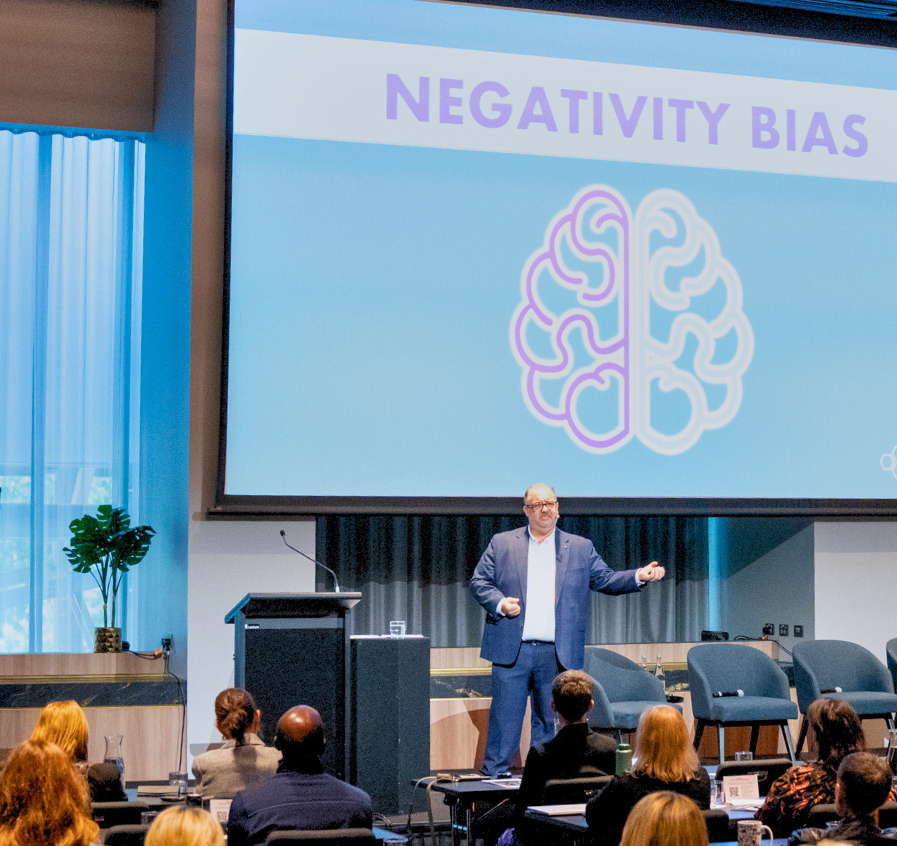
Turning the Tide on Negativity Bias: A Strengths-Based Approach to Performance and Resilience
Our brains are wired to focus on threats. From an evolutionary perspective, negativity bias served us well — it kept our ancestors alive. But in today’s workplaces, this hardwiring often works against us. Left unchecked, it narrows thinking, amplifies risk-aversion, and stifles performance, collaboration, and innovation.
Understanding Negativity Bias in the Workplace
Negativity bias is the psychological phenomenon where negative events, emotions, or feedback have a disproportionately stronger effect on our minds than positive ones. One critique outweighs a dozen compliments. One setback overshadows weeks of progress.
In leadership and team settings, unchecked negativity bias can create an environment where people focus more on problems than possibilities. Over time, this erodes confidence, engagement, and resilience.
The Impact of Negativity Bias on Team Performance
It narrows thinking and encourages people to dwell on problems rather than solutions. Over time, this undermines confidence, collaboration, and resilience within teams.
But, you and your teams can reframe the focus. A strengths-based approach to team and leadership development provides a powerful antidote.
Rather than focusing just on weaknesses or challenges, it shifts attention toward what is working — the talents, resources, and opportunities that can be leveraged to move forward.
What Strengths-based Leadership Looks Like in Practice
In practical terms, leaders who embrace a strengths mindset:
- Recognise and build on individual and team talents
- Frame feedback in a way that promotes growth and learning
- Encourage solution-focused thinking, even in tough times
- Foster greater psychological safety, trust, and ownership
By helping individuals and teams connect to their strengths, we create the conditions for sustained high performance and resilience — even in complex, high-pressure environments.
Simple Ways to Reduce Negativity Bias at Work
Whether you are a leader, team member, or individual contributor, here are three simple ways to counteract negativity bias today:
- Name It to Tame It: Start conversations by recognising progress, wins, or strengths before diving into gaps or challenges.
- Reframe Problems as Opportunities: Ask, “What strengths can we use here?” or “Where have we solved similar challenges before?”
- Embed Recognition Rituals: Regularly spotlight achievements, team strengths, and progress milestones — not just at project completion, but along the way.
Recognising negativity bias is the first step. Leading beyond it — by building a culture of strengths, resilience, and growth — is where real impact happens.
Who Benefits From a Strengths-based Approach
Leaders, team members, and individual contributors all benefit. It fosters a growth mindset, strengthens relationships, and improves collective problem-solving.
When teams focus on what they do best and build on it, they are better equipped to tackle challenges, innovate under pressure, and deliver sustainable results.
The choice is ours: we can allow our ancient wiring to shape today’s outcomes — or we can rewire our attention toward progress, potential, and purpose.
FAQs
What is negativity bias in the workplace?
Negativity bias refers to our tendency to focus more on negative events, emotions, or feedback than positive ones. In the workplace, this can lead to risk-aversion, reduced innovation, and lower team morale.
How does negativity bias affect team performance?
It narrows thinking and encourages people to dwell on problems rather than solutions. Over time, this undermines confidence, collaboration, and resilience within teams.
Why is it important for leaders to address negativity bias?
Unchecked negativity bias can stifle learning, trust, and engagement. Leaders who actively address it create psychologically safe environments that support high performance and adaptability.
What is a strengths-based approach to leadership?
A strengths-based approach focuses on what individuals and teams do well — their talents, successes, and potential. It shifts attention from weaknesses to opportunities for growth and progress.
How can I reduce negativity bias in team discussions?
Start conversations by recognising achievements before discussing problems. This reframes the dialogue and promotes a more balanced, constructive mindset.
Can strengths-based leadership improve resilience?
Yes. By consistently focusing on team strengths and wins, leaders help build trust, confidence, and the capacity to adapt during challenges.
What are practical ways to counter negativity bias at work?
- Recognise wins before addressing challenges
- Reframe problems as opportunities
- Build regular recognition into team culture
Who can benefit from a strengths-based approach?
Leaders, team members, and individual contributors all benefit. It fosters a growth mindset, strengthens relationships, and improves collective problem-solving.
About the Author: Philip Woods – Accredited Strengths Coach and Strategy, Transformation and Negotiation Expert
An experienced strategist, leadership adviser, and facilitator, Philip brings a unique blend of strategic insight, commercial acumen, and operational leadership experience. A former resources-sector executive and qualified lawyer, he offers decades of practical, global experience helping organisations cut through complexity, unlock performance, and deliver meaningful results.
To find out more about Philip and his negotiation training and preparation workshops, please visit this link: https://essemy.com.au/facilitators/strategy-and-planning-expert/philip-woods/